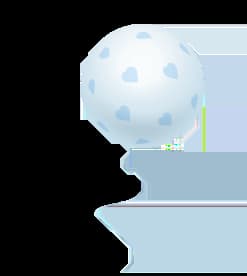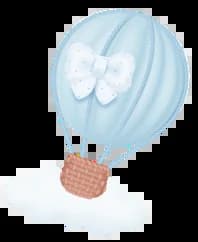Your baby was born into the world to background noises. Suppose you're wondering why; remember that the womb is a boisterous environment. Although it's a good amount of cushioning and comfort, your infant was in a sonic environment for nine months and could feel a quiet soothing hum.
Although most parents are swaddling their children these days, it is surprising how few parents use white noise to aid their child's sleep. White noise can be a lifesaver for agitated children and provides an incredible signal to help babies fall asleep and remain asleep longer. This particular sound is just equally important as the swaddling.
So it's not surprising that many babies and infants require white noise to sleep. Indeed, white noise -- the constant and quiet type that blocks out other noises like barking dogs or sirens can also aid adults to sleep. One should be aware of using white noise to calm your child into sleep.
Is it okay to use white noise for infants?
White noise is designed to be played in the background; therefore, as long as it remains there, white noise is acceptable for infants in terms of health. AAP -American Academy of Pediatrics suggests that you use a white noise device with a maximum volume of fifty decibels (about the level of the quietest dishwasher); you'll need to keep it away from the crib of your baby. Use the lowest volume setting, and stop playing it when the baby is asleep if that's possible.
If you're worried about the dangers, use the advice of your common sense and intuition. Make sure you don't place the machine's white noise as well as its wires in your child's reach. You should also switch it off if it is too loud or could be causing him anxiety.
What kind of white noise is the best for the baby?
There are a variety of white noise makers available on the market. If you're considering purchasing a new one, ensure that it comes with the features that parents appreciate, such as sound control with a timer, auto shutoff and portability, so you can demonstrate how great a sleeper your child will be when they visit Grandma's home.
Other parents make up their own, usually using white sound sources that can work for their needs. Certain parents rely on the sound produced by air purifiers or videos of vacuum cleaners on YouTube. There are many alternative sources of "white noise", such as apps and videos which play hairdryer's sounds, water birds singing, rain as well as rolling waves. (Sticklers note that some of these do not count as white noise. There's a "pink" or "brown" noise; however, most parents are exhausted enough to think about all the details.)
Another popular option for white noise, particularly in the summer months: fans. Air conditioners, not so much. One study has found that they don't significantly affect sleep, possibly because they shut off and turn on often.
As with adults, infants have a preference for sounds while sleeping. Therefore, one of these strategies would be to apply the trial and error process to finalise the source.
How can white noise help babies to sleep?
White noise can create a comfortable environment for your child, similar to the soft teddy bear with sounds, which lets your baby know that it's time to fall asleep. The reason why white sound is compelling is that it echoes the sounds that your baby heard while in the womb. White noise was a great way to get them to sleep then and could help them fall asleep right now. White noise can mask external distractions like a loud truck or TV in the next room. It also covers inner discomforts such as the discomfort of teething or a mild hunger which can boost ZZZs.
To begin using white noise, play the sounds like background music in your baby's sleep routine. In time, it will inform your baby that their dreamland escape is only a matter of moments away. It will be the case until the baby's calming reaction diminishes over three to four months. At this point, your baby will be aware that the sound of white noise indicates that bedtime is here. Therefore, each time you start the white noise, your child will be mentally prepared to sleep.
Utilizing the White Noise Machine
Once you've decided on the best machine for you, are you wondering what the best way to utilize it is? What is the best volume? What is the maximum volume?
White noise machines create a soothing womb that calms infants, allowing them to stop crying and sleep quicker. They also aid babies in sleeping longer. It might be a miracle, yet the secret is easily explained.
It may be necessary to alter the volume of the white noise machine to help calm your baby's crying. After your child is calm, you can adjust the volume until it is at the level of a gentle shower. If it is uncomfortably for you, make sure to lower the volume so that your child might also be uncomfortable.
Have you ever questioned why your child sleeps for just 20 minutes at a stretch? While your baby dreamer sleeps at night, they go between heavy sleep as well as light sleep having brief intervals of what's called "sleep awakening" around every 20 minutes or as often. Babies awake easily during these times of restful sleep, and then get anxious, which can lead to the premature conclusion of the nap time.
Like swaddling, white noise shouldn't be played all day. This is because you need your child's brain and ears to get used to the regular sounds of your house along with your voice. This is why you should use the white noise for when your baby's most agitated and increase nap time and sleep at night.
White noise can aid in calming your baby's alarm clock by drowning out noises from doors, noisy siblings and other possible disruptions during the vulnerable stages of sleep. If your baby starts to wake at random, the soothing drone of the white-noise device could be a source of calm that will help them settle into a deep sleep.
Four Ways Of Safely Using White Noise Machines Safely to Calm Your Baby
- Keep white noise machines at least 6.5 feet (200 cm) away from your baby's sleeping area.
- Reduce the volume to a level lower than the maximum.
- White noise should only be used to comfort your baby while sleeping.
- Follow the manufacturer's instructions as well as any safety precautions.
Summing Up
White noise noises can be beneficial during difficult times in your baby's life, particularly within the first few months when he/she is having trouble sleeping or exhibiting indications of colic. Babies do not come into this world knowing how to sleep; it is a learned talent. If your white noise generator is always humming, it may interfere with your baby's ability to self-soothe and go to sleep without assistance. White noise can be an effective technique for assisting neonates and babies in getting the rest they require. It's safe, inexpensive, and won't harm your baby's hearing unless it's misused. But it's not something you or your child should rely on indefinitely. Mamy Poko Pants will always be your trusted companion in your parenthood journey.
FAQ's
Q. What is white noise, and how does it help babies sleep?
Ans.White noise is a consistent sound that masks sudden noises, creating a womb-like environment for babies. It helps calm them, reduces startle reflexes, and signals that it’s time to sleep. By blocking external disturbances, white noise encourages longer and more restful naps and nighttime sleep.
Q. Is it safe to use white noise for infants?
Ans.Yes, when used correctly, white noise is safe for infants. The American Academy of Pediatrics recommends keeping the volume below 50 decibels and placing the machine at least 6.5 feet from the crib. Use it only during sleep times and avoid constant, all-day exposure.
Q. What type of white noise works best for babies?
Ans.The best white noise is consistent, soothing, and low-pitched, resembling womb sounds. Many parents use machines with adjustable settings, while others use fans, air purifiers, or apps playing gentle rain or ocean sounds. Trial and error helps determine which sound best calms your baby.
Q. How loud should white noise be for my baby?
Ans.Keep the volume at or below 50 decibels—about the level of a quiet dishwasher. Too loud can harm hearing or cause discomfort. If it feels loud to you, it’s likely too loud for your baby. Always prioritize a gentle, soothing level for safe use.
Q. How far should the white noise machine be from my baby?
Ans.The white noise machine should be at least 6.5 feet (about 2 meters) away from your baby’s crib. This ensures the sound is gentle and not overwhelming while reducing exposure to wires or the device itself. Proper placement is key for safety and comfort.
Q. Can white noise replace other sleep techniques like swaddling?
Ans.No, white noise works best when combined with other calming techniques, such as swaddling or a bedtime routine. It signals sleep time and creates a soothing atmosphere but shouldn’t replace essential bonding practices or comfort measures that help babies feel secure and ready for rest.
Q. Should I use white noise all day for my baby?
Ans.No, white noise should not be used all day. Babies need to hear normal household sounds and voices to develop their listening and learning skills. Use white noise during naps or bedtime to help soothe them and signal sleep time but keep awake periods natural.
Q. Can white noise help with colic or frequent waking?
Ans.Yes, white noise can help soothe babies with colic or frequent nighttime waking. Its calming effect masks internal discomfort and external noises, helping babies relax and sleep longer. However, it’s not a cure for underlying issues—consult your pediatrician for persistent sleep disturbances or discomfort.
Q. Are there portable white noise options for travel?
Ans.Yes, many portable white noise machines and mobile apps are designed for travel. These devices often include timers, adjustable volumes, and soothing sound options, making them convenient for naps at Grandma’s house or during trips. Consistency helps babies sleep well even in unfamiliar environments.
Q. When should I stop using white noise for my baby?
Ans.White noise is most effective during the first few months when babies are adjusting to life outside the womb. Gradually reduce its use as your child grows and develops self-soothing skills, usually around 6–12 months. Monitor your baby’s response and adjust based on their needs.
















